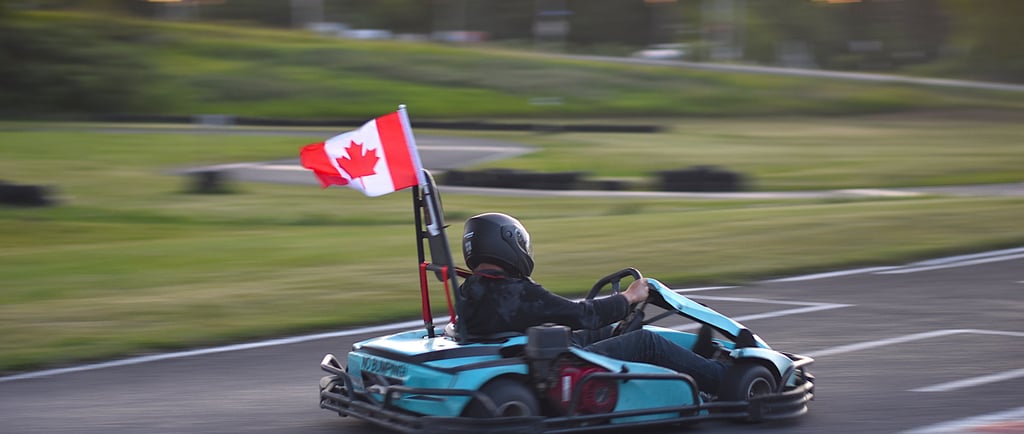Mastering Oversteer
Turning Mistakes Into Speed on the Track


When it comes to karting, precision and control are key—but what if we told you that a little bit of sliding can actually work in your favor? Welcome to the world of oversteer—a technique that, when used correctly, can give you an edge over your competitors and help you carve corners like a pro.
What Is Oversteer?
Oversteer happens when the rear wheels of your kart lose grip before the front wheels during a turn. The result? The back end of the kart steps out, and you begin to rotate more than intended.
In casual driving or on a wet track, oversteer can feel like a loss of control. But in racing—especially at a technical, twisty circuit like The Spot Karting in Ottawa—it can be a powerful weapon.
The Art of Controlled Oversteer
While oversteer might seem like something to avoid, skilled drivers use a technique called "throttle steering" or "drifting" to apply controlled oversteer. Here's how:
Corner Entry: As you approach the corner, ease off the throttle and set up your line.
Weight Transfer: Brake smoothly to shift the weight forward. This increases front-end grip and allows the rear to loosen slightly.
Turn-In & Throttle: As you steer into the corner, gently modulate the throttle. Too much gas, and you’ll spin out. Just the right amount, and you’ll rotate smoothly through the turn.
Catch and Exit: Countersteer slightly (steer into the slide) and straighten out the kart as you exit the corner, applying more throttle to power out.
When done right, this can actually reduce your lap time—especially in tight corners where rotating quickly is more important than maintaining top speed.
Why Oversteer Matters in Karting
Unlike full-size race cars, karts have no suspension and a fixed rear axle, which means they behave very differently under load. Oversteer can be your best friend when:
Navigating tight hairpins
Passing competitors by taking a more aggressive line
Maintaining momentum on technical indoor circuits
Experienced racers often use slight oversteer to get the kart to rotate faster, allowing earlier throttle application and a straighter exit. That adds up to better lap times.
Pro Tips for Practicing Oversteer
Start Slow: Don’t jump straight into high-speed drifts. Practice smooth throttle and steering inputs in low-speed corners.
Feel the Grip: Learn to sense when the rear is starting to slide. The goal is controlled rotation, not spinning out.
Use It Sparingly: Oversteer is a tool—not a crutch. Overusing it will wear your tires and cost you time in longer stints.
